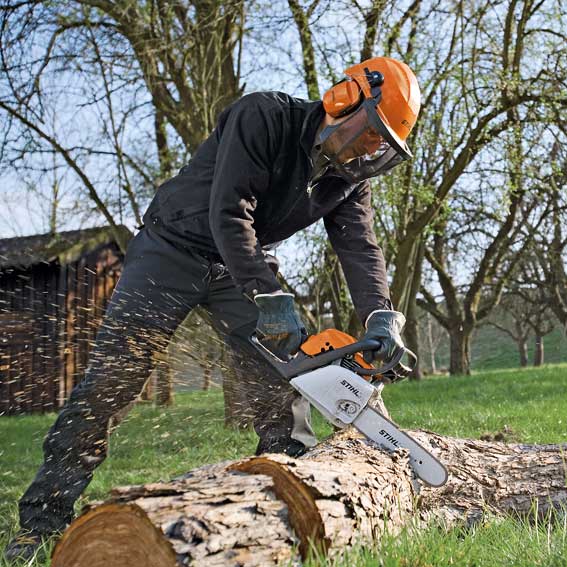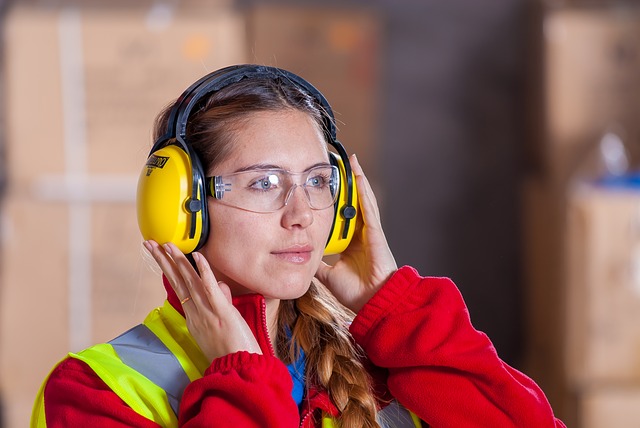
A Guide to Workplace Noise and Ear Protection
According to the HSE, a staggering 170,000 people suffer hearing problems or ear conditions as a result of excessive noise in the workplace. Understanding why ear protection is important and when it is necessary is the responsibility of the employer but it is also important that employees take an active interest in their own hearing and wear the right gear, when operating loud machinery like chainsaws.
In this short guide, I want to look at ear protection, why it’s important and what the law says when it comes to ensuring your workforce are wearing appropriate ear defenders. Let’s start then by looking at why ear protection is important.
Hearing Loss
It’s important to realise, that for the most part, hearing loss is a gradual process that takes place when an individual is exposed to excessive noise over a long period of time. Because it is so gradual, many people won’t notice hearing loss straight away and quite often not until it has started to affect their ability to hold conversations and speak on the phone. This hearing loss is permanent.
The other type of hearing loss can be very sudden as a result of being near a very loud noise such as an explosion. This is more extreme and will more severely affect the ear closest to the source of the noise.
Hearing loss is often associated with tinnitus, which is a constant ringing in the ear. Many people suffer with tinnitus but it is often temporary. It’s important that your workers understand that tinnitus is a sign of hearing loss and report it if they believe that it has been brought on as a result of a noisy workplace, so they can be assessed and better ear protection can be issued if necessary.
Employer Responsibilities
All employers have a responsibility for health and safety in the workplace, whether that be employees, contractors, visitors or members of the public if it’s in a public space. This is especially important when it comes to arborist and tree surgery work, where noise levels are high and specialist personal protective equipment must be worn due to chainsaw use.
The main piece of legislation governing these responsibilities when it comes to noise level and hearing protection is the Control of Noise at Work Regulations 2005, which replaced the Noise at Work Regulation 1989 with new requirements for employers.
Under the latest regulations, employers are required to protect the hearing of their workforce if they are exposed to regular noise over 85 decibels, with regular hearing checks put in place. The regulation stipulates the following requirements from employers:
- Carry out a risks assessment that looks at all noise in the workplace
- Reduce, where possible, any exposure of your employees to this noise
- Provide adequate ear protection if noise exposure cannot be reduced enough by other means
- Observe all legal limits on noise exposure
- Provide all workers with appropriate information and training where required
- Carry out regular health checks on employees where there is a risk to hearing loss
Noise level is also covered in other legislation such as the Noise Emission in the Environment by Equipment for use Outdoors Regulations 2001 (NEEEOR) and the Provision and Use of Work Equipment Regulations 1998.

Selecting the Right Ear Defenders for your Workers
Hearing protection comes in two main types; earmuffs and ear plugs. The level to which ear protection can reduce noise levels is referred to as attenuation and is usually measured in decibels (dB). It’s worth noting though that much ear protection will be more effective at reducing noise levels at higher frequencies than lower. Because of this reason, manufacturers tend to opt for a simplified noise reduction (SNR) when labelling their products, which is measured in decibels.
Ear defenders should have an SNR of between 20 and 30 dB. When choosing the right ear defenders for your workplace, you should ask yourself several questions:
- Is the ear defender manufacturer an established or well known company like 3M or Optime?
- Are you buying from an established and trusted equipment supplier?
- Do the products contain the right safety certification and are they covered by a warranty?
- Is the supplier part of the Registered Safety Supplier (RSS) Scheme?
- Do the ear defenders offer appropriate SNR to cover the job in hand?
Many workers, such as aerial tree workers or anyone working with a chainsaw, will require a helmet and visor to protect their head and eyes. Specialist groundsmans chainsaw helmets and arborist helmets come with ear protection built in, meaning there is no chance of hearing protection or head safety becoming compromised by trying to fit ear defenders underneath or on top of a helmet.
When it comes to size, ear defenders tend to come in adult and child sizes and are pretty flexible. That being said, it’s essential that they do fit snuggly as poor fitting ear defenders can compromise noise protection.
Ear defender pads and foam can be replaced on many models, which means that a good pair of ear defenders can last a long time. Be sure to keep an eye on any cracks or breaks in these parts though as these will compromise the equipment’s effectiveness and could put your worker’s hearing at risk.
